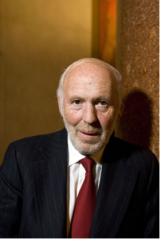
But, alas, Medallion had a strong December along with most of the global market indices. The performance, however, still put it below its net return range of between 40.5 percent and 84.1 percent in each of the prior four years.
Remember, for years Medallion has only been open to partners, employees and friends. Simons' two newer public funds also posted strong absolute performance. Renaissance Institutional Futures Fund (RIFF) — introduced in October 2007 — finished up 22.7 percent after climbing just 3.8 percent last year and losing 12 percent in 2008. The Renaissance
Institutional Equities Fund (RIEF) fell by more than 1 percent in December, and finished the year up 16.5 percent. This is its biggest gain since 2006, when the fund returned nearly 21 percent. It had lost money the prior three years.
However, RIEF was created to generate gross annual returns of 400 to 600 basis points above the S&P 500 over rolling 3- to 5-year periods. And the S&P 500 surged in December, finishing the year up 13 percent. As a result, RIEF has only beaten the benchmark by its hoped-for margin in two of its six years of existence.
Over the past three years, RIEF beat the S&P by 350 basis points, lagged by nearly 3100 points and beat the benchmark by more than 2100 points. Even so, back in September Medallion reaffirmed its commitment to RIEF and RIFF, which managed more than $7 billion combined at year-end.
"Our confidence in these quantitatively-managed, long investment horizon products has been bolstered both by an intensive reexamination of their underlying technology and by their performance during the recent tumultuous economic period," said Medallion co-CEOs Peter Brown and Robert Mercer in a letter to investors at the time.
They noted that since its inception RIEF has returned a total of 4.55 percent while experiencing only 60 percent of the volatility of the S&P 500. During that same period the index declined 5.34 percent. The firm also noted that Renaissance staff added substantial capital to these funds.







